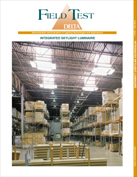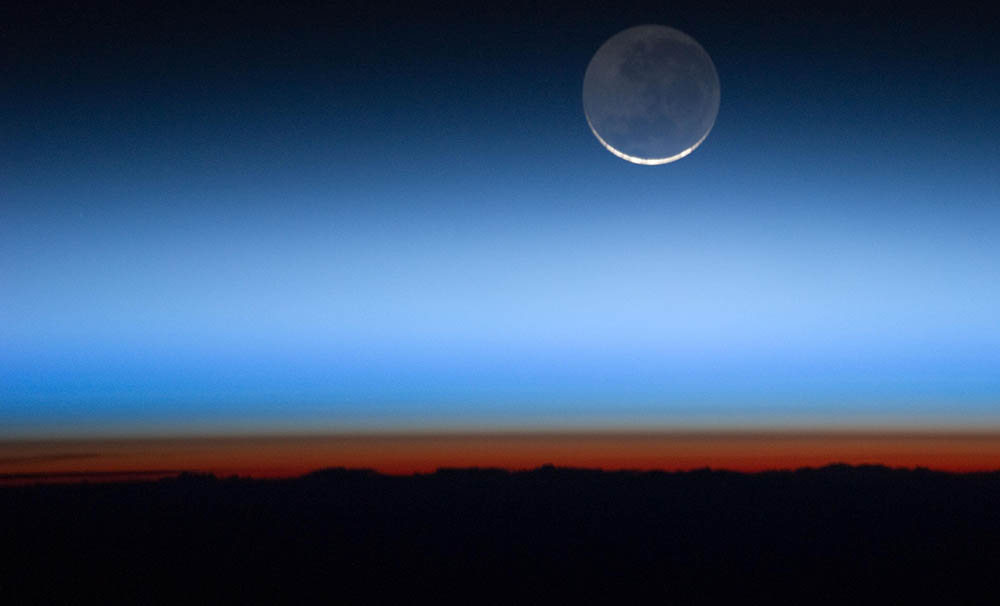Using the most appropriate light source, lamp, and luminaire is an important technique to reduce energy use. Below are some of the completed projects related to lighting technology and equipment.
Lighting for Health and Energy Savings: Schools
Lighting in K-12 classrooms should provide circadian stimulus to students (who tend to favor later bed and wake times than the average adult) to promote entrainment to the natural 24-hour light-dark cycle. Doing so can thereby improve sleep quality, psychological well-being, and possibly scholastic performance of students. However, providing circadian-effective lighting may have the unintended consequence of increasing energy use in classroom applications. This short guidance document is intended to help lighting specifiers design lighting for K-12 classrooms that can deliver high levels of circadian stimulus while avoiding increased energy use. This project was sponsored by the LRC’s Lighting Energy Alliance and Light & Health Alliance.
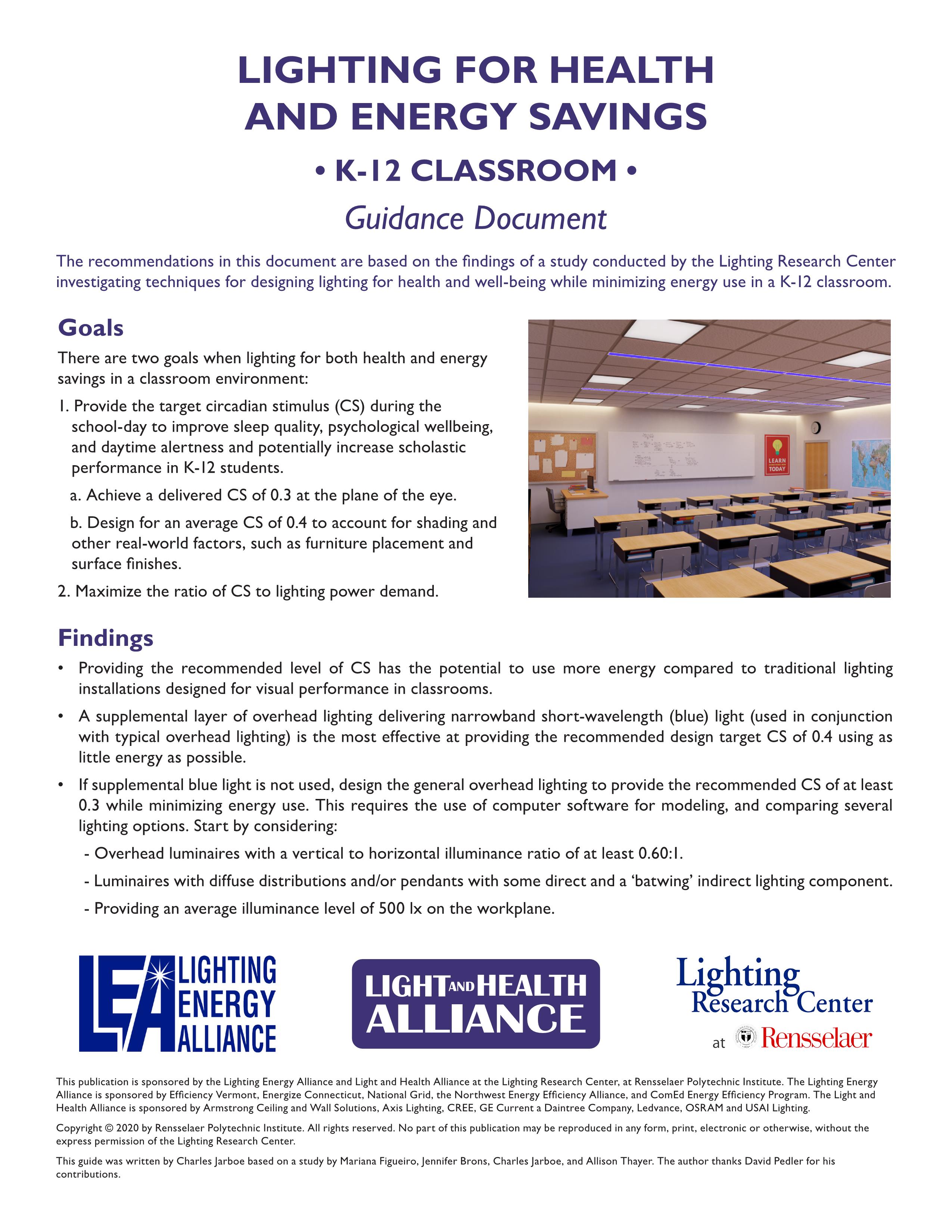
Lighting for Health and Energy Savings: Healthcare
The lighting in a hospital patient room serves numerous functions, one of which should be providing a robust 24-hour light-dark pattern to promote circadian entrainment. This can improve sleep quality, psychological health, and recovery of patients undergoing treatment. Unfortunately, providing lighting with such non-visual impacts has the potential to increase energy use as well as discomfort glare compared to general patient room lighting. This short guidance document is intended to help lighting specifiers design lighting for hospital patient rooms that will be circadian-effective and visually comfortable while avoiding increased energy use. This project was sponsored by the LRC’s Lighting Energy Alliance and Light & Health Alliance.
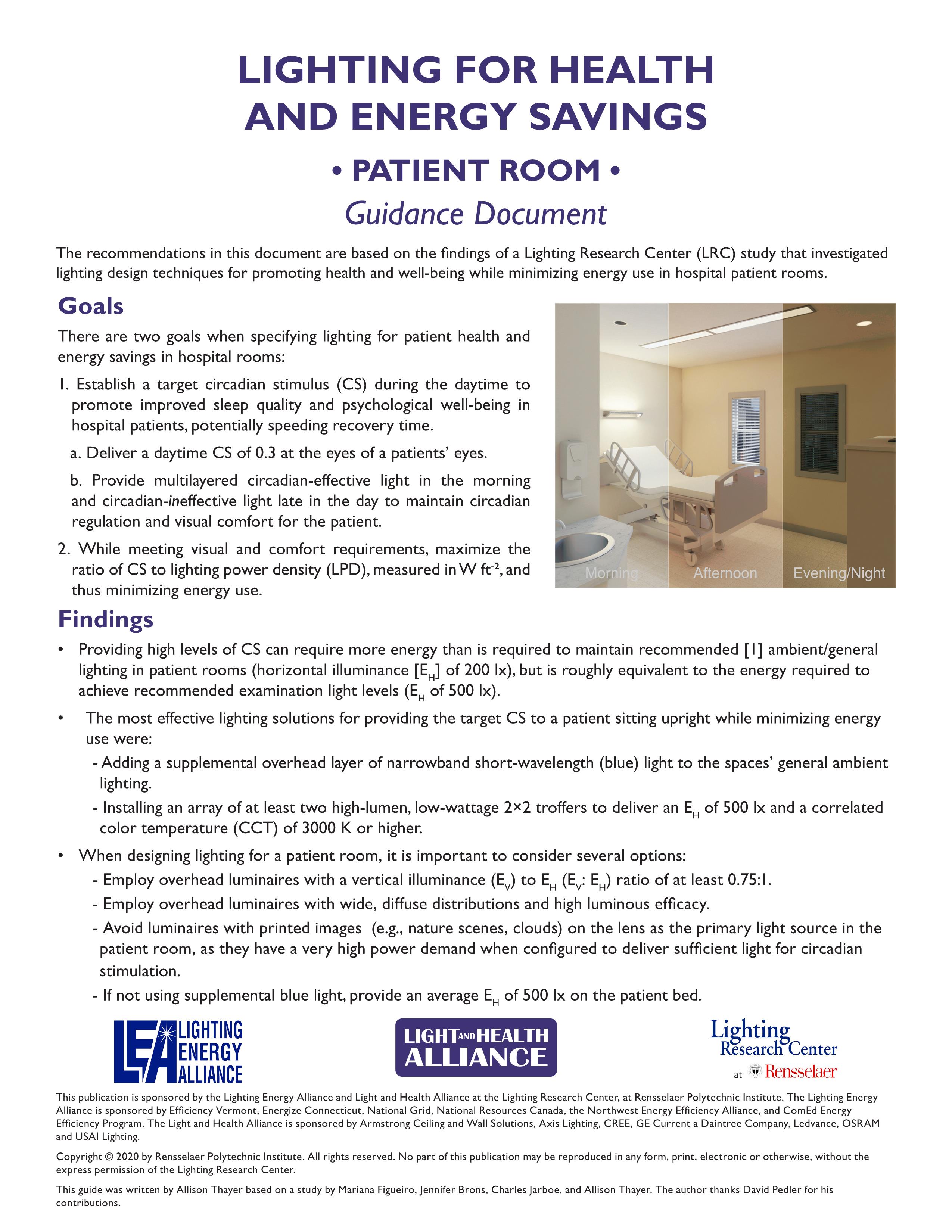
Lighting Answers: UV Disinfection Products
This publication includes information on products that produce optical radiation at specific ultraviolet (UV) or very short visible wavelengths, designed for use in disinfecting indoor building surfaces and/or air. Three key aspects of UV disinfection are considered throughout the document: product effectiveness, radiation safety, and energy use in buildings.
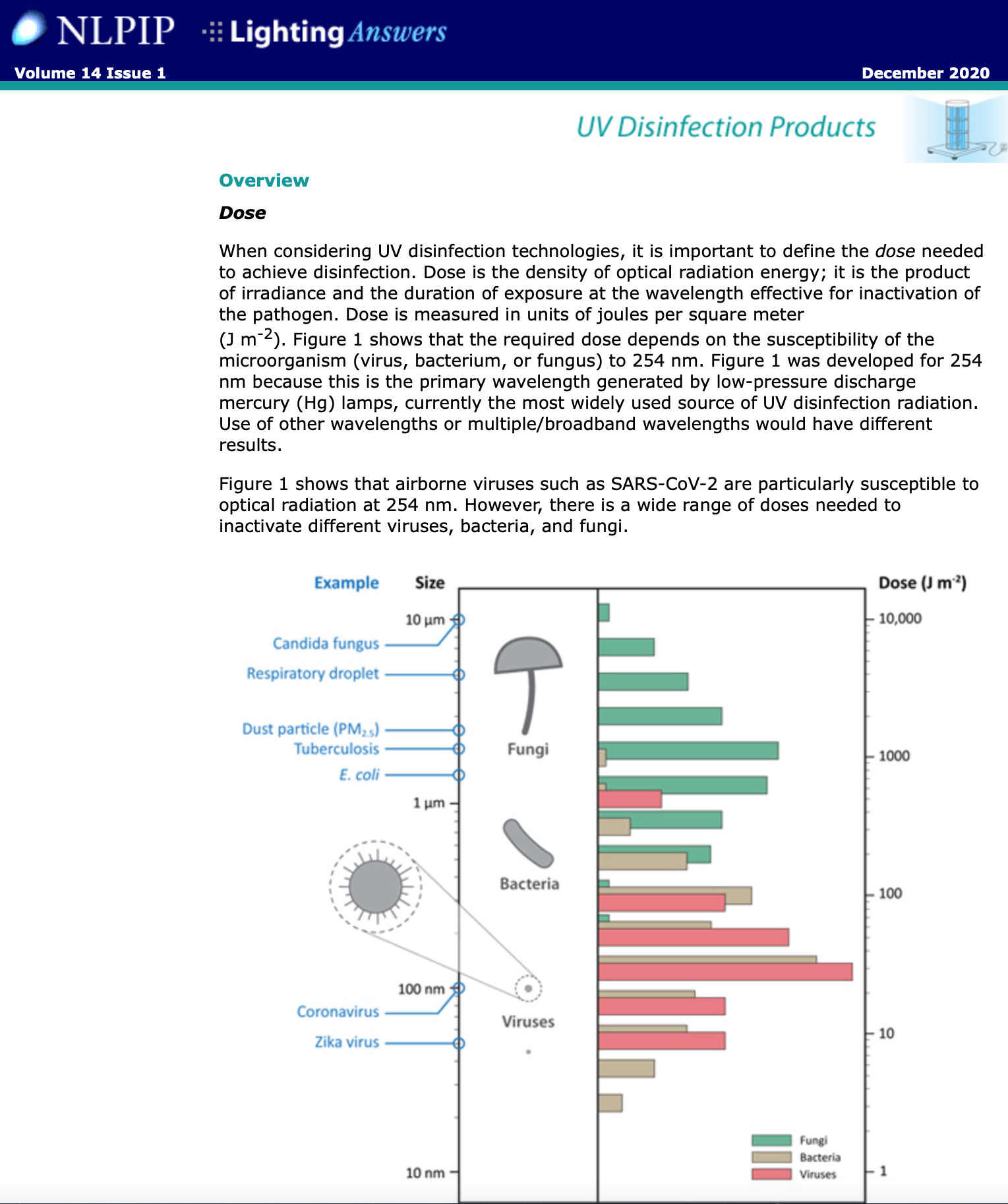
Horticulture Luminaire Calculator
This free online calculator allows luminaires to be compared based on equal photosynthetic photon flux density (PPFD). PPFD for plants is analogous to photopic illuminance on a work surface in an architectural application. The calculator includes the analysis of luminaire-specific and application-specific metrics, which provide the best available information regarding any given horticultural luminaire’s performance.
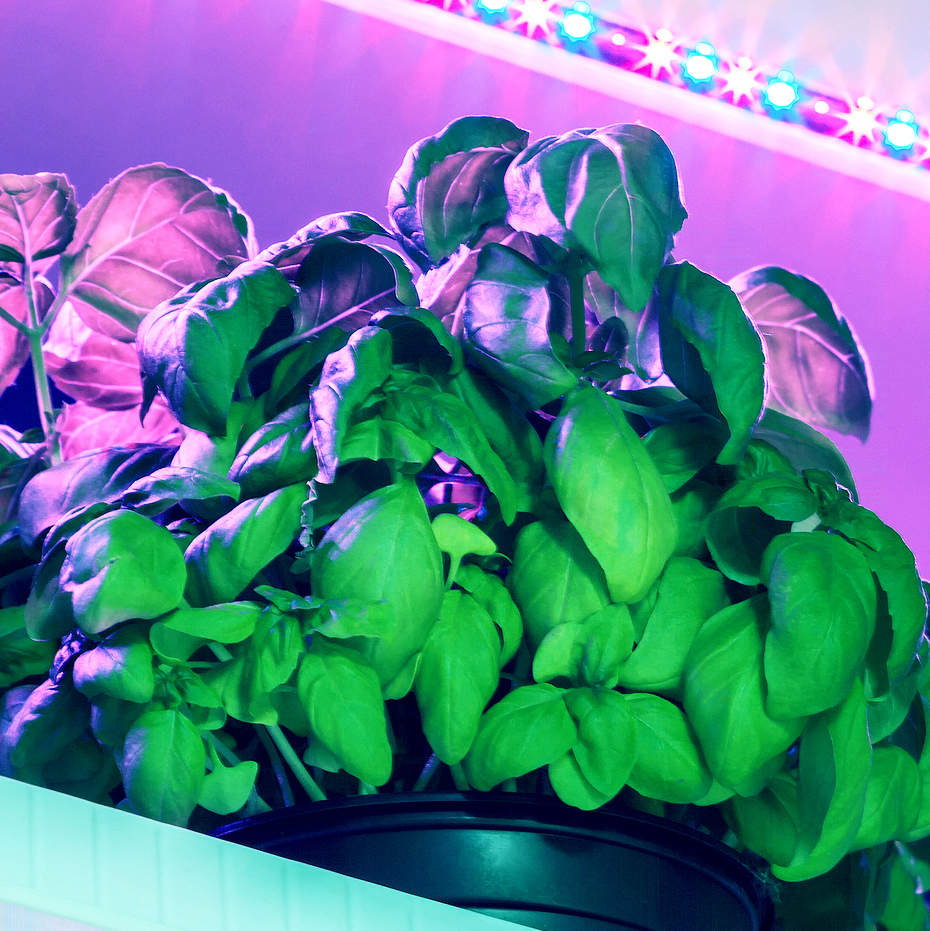
Avoiding Excess Brightness when Upgrading from Fluorescent to LED Troffers
When replacing fluorescent troffers with light-emitting diodes (LEDs) it is important to specify the new troffers effectively. In some cases, the new lighting system can create a space that is too bright, resulting in wasted energy and complaints from occupants. This guide details four steps that will provide adequate brightness without wasting energy, when specifying new LED troffers.
LED and HID Horticultural Luminaire Testing
The LRC examined 13 horticultural luminaires, including LED,
HPS, and MH products. The report also provides a framework for testing and evaluating additional horticultural luminaires on an equal-PPFD (photosynthetic photon flux density) basis.
HPS, and MH products. The report also provides a framework for testing and evaluating additional horticultural luminaires on an equal-PPFD (photosynthetic photon flux density) basis.
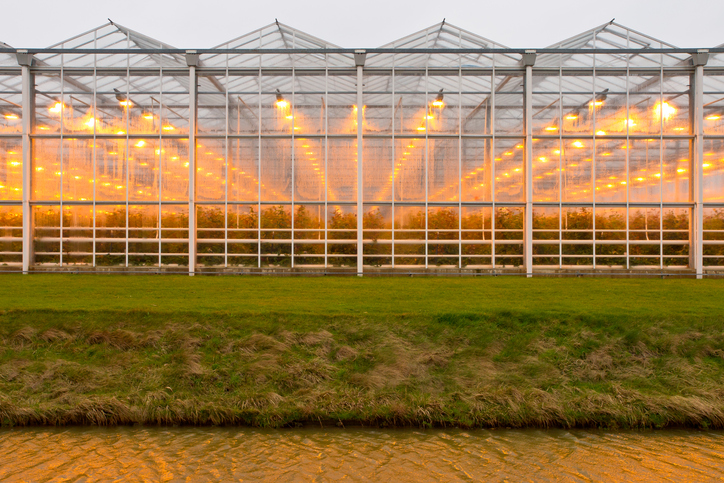
Residential LED Demonstrations
In support of NYSERDA's Residential Emerging Technologies and Accelerated Commercialization (ETAC) initiative, the LRC demonstrated the effectiveness of LED lighting in 11 residences across New York State in 2015 through 2017. The lighting included LED bulbs and dedicated LED fixtures, in both new and existing homes. The report discusses energy savings, payback periods, occupant acceptance, and installer experiences.
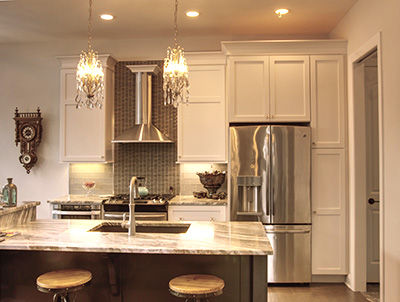
Pin-base LED Lamps
This is an accessible guide for contractors and specifiers who are replacing existing CFL pin-base lamps with new LED lamps. Factors that should be taken into consideration include ballast compatibility, ballast age, and power demand of the current lamps. The guide was published in 2016.
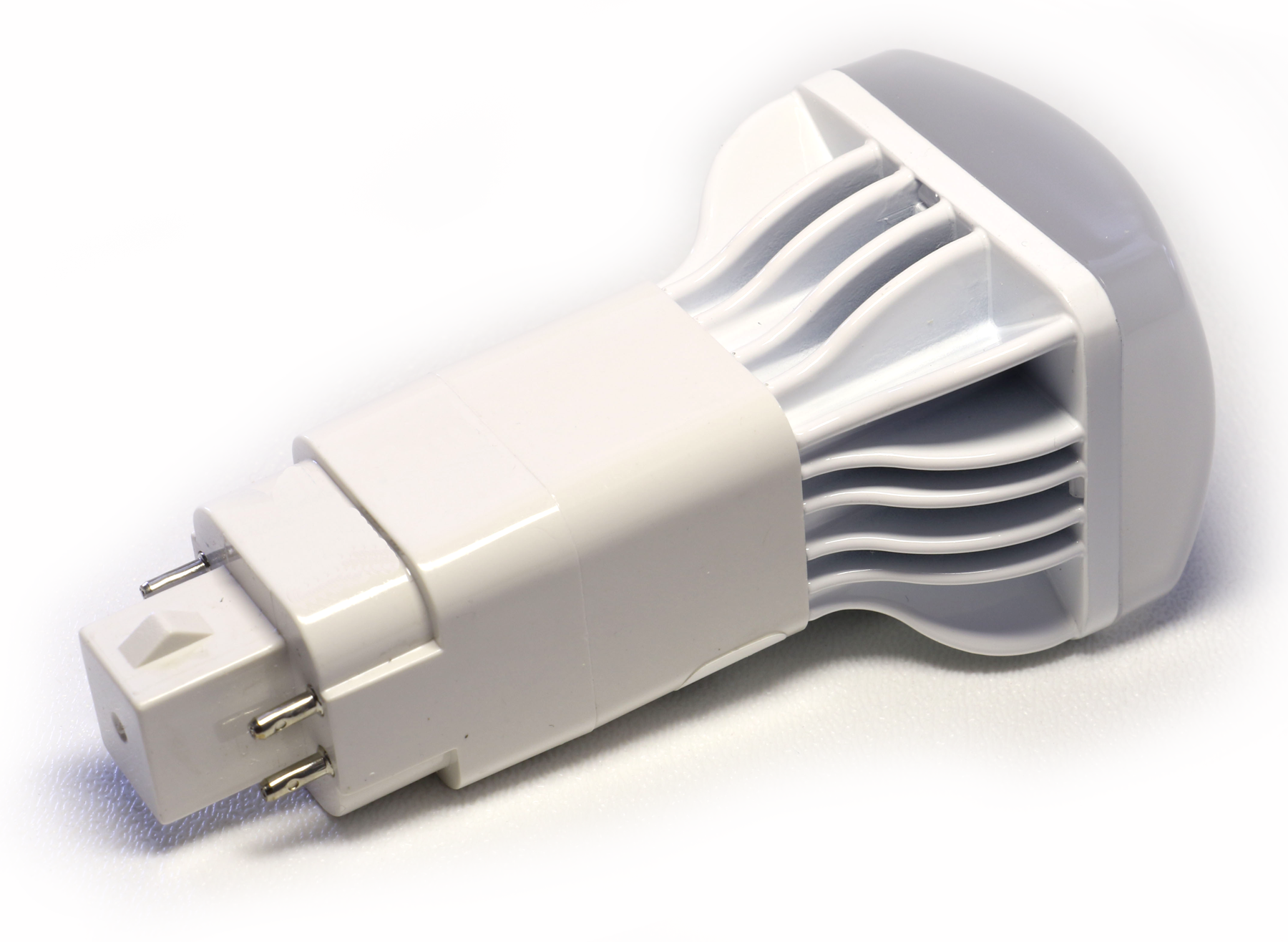
Mogul-base LED Lamps
Mogul-base LED replacement lamps are marketed as equivalent replacements for incumbent HID lamps. This 2015 study, published by the Bonneville Power Administration, included pilot testing, apllication efficacy calculations, brightness calcualations, and high temperature testing.
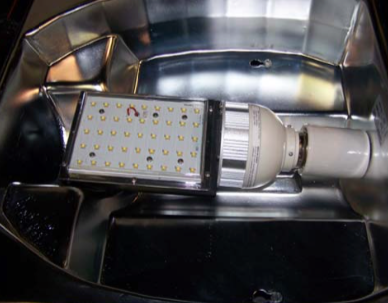
LED Troffer Specification Webinar
The Lighting Energy Alliance (LEA) at Rensselaer’s Lighting Research Center (LRC) presented this webinar on specifying LED troffers and retrofit kits on October 21, 2015. The speaker was Jeremy Snyder. Topics included specifying troffers that provide adequate illuminance, maximize energy savings, maximize occupant satisfaction, and meet payback period requirements. The document “LED Troffer Specification Guidance,” below, summarizes the content of the webinar. The webinar was intended for energy efficiency specialists who are not lighting experts.
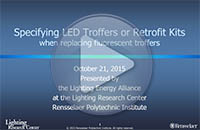
LED Troffer Specification Guidance
This is an accessible guide for contractors and specifiers who are replacing existing fluorescent troffers with new LED troffers or retrofit kits. Factors that should be taken into consideration include providing adequate illuminance, energy savings, occupant satisfaction, payback period, and using lighting controls. The guide was published in 2015.
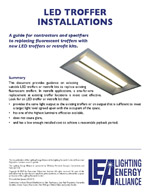
Plasma Lighting Systems
Plasma lighting systems, also known as electrodeless high-intensity discharge (HID), light-emitting plasma (LEP), high-efficiency plasma (HEP), or advanced plasma lighting (APL) are marketed primarily for high-bay and outdoor lighting applications. This 2013 National Lighting Product Information Program (NLPIP) report helps lighting specifiers to understand plasma lighting systems and their performance characteristics, including light output, system efficacy, color characteristics, lumen maintenance, and rated life. This report also provides information about operating orientation, dimming, warm-up, and restrike times, electromagnetic interference and compatibility (EMI/EMC), and ultraviolet (UV) radiation.

LED Streetlights
This 2011 National Lighting Product Information Program (NLPIP) report details the results of a study of LED streetlights for local roads. A companion report discusses LED streetlights for collector roads. Although the technology has advanced since the report was published, the recommended evaluation methods are still relevant today, and have been adopted by the lighting industry.
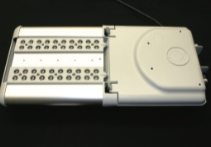
Lighting Terminology
Designers, specifiers, and manufacturers within the lighting industry use unique terms and concepts, which have evolved into professional usage over a period of time and have been officially defined by professional bodies such as the Illuminating Engineering Society of North America (IESNA). This is a resource to learn what "lumen," "illuminance," "CCT," and other terms mean.

LED Residential Under-cabinet Testing
This 2010 National Lighting Product Information report provides information about LED under-cabinet luminaires for kitchens that were available in consumer-oriented retail stores in the Albany, New York, area in the spring of 2009. The products were tested to determine the amount of light each provides on countertop and backsplash areas, the uniformity and color of the light, and the efficacy of the luminaires.

CFL Tips
CFLs can help save the environment and save you money. However, “going green” sometimes requires a little insight or planning. So, to help manage your CFL expectations and become an informed consumer, the LRC has outlined some facts and guidelines to assist you.
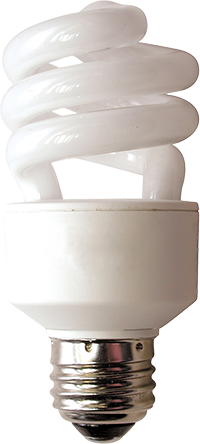
CFL Testing
This 2005 National Lighting Product Information report contains performance data for compact fluorescent lamps (CFLs) rated at or above 13 watts that were purchased from 1999 through 2005. The report includes NLPIP test data and manufacturers' data on both self-ballasted CFLs and modular CFL products that are sold with ballast and lamp packaged as a single unit.
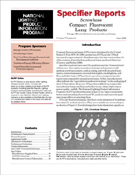
CFL Residential Downlight Testing
This 2008 National Lighting Product Information report presents photometric, electrical, and thermal performance data for selected CFL residential downlights that qualify for ENERGY STAR® approval. Since 1980, the trend in residential new construction and remodeling has been to install recessed downlights as the predominant luminaire. Their clean, low-profile appearance appeals to many consumers. This report examines recessed downlight components, installation, operation, and performance.
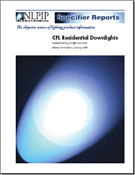
PEARL Testing Program
The completed Program for the Evaluation and Analysis of Residential Lighting (PEARL) was a watchdog program that operated from 2000 through 2009. It was created in response to complaints received about the performance of certain ENERGY STAR lighting products and the lack of a self-policing mechanism within the lighting industry at the time that would ensure the reliability of these products and their compliance with ENERGY STAR specifications. To remedy these problems, PEARL purchased and tested 185 models of compact fluorescent lamps and 52 models of luminaires.

Integrated Skylight Luminaire
The Integrated Skylight Luminaire combines a skylight, a sunlight diffuser box, and an electric lighting system. A photosensor control system automatically dims or switches electric lights in response to daylight. This 2003 DELTA (Demonstration and Evaluation of Lighting Technologies and Applications) publication documents the field performance of a prototype skylight for warehouses that incorporates fluorescent lighting and an automatic control system.
